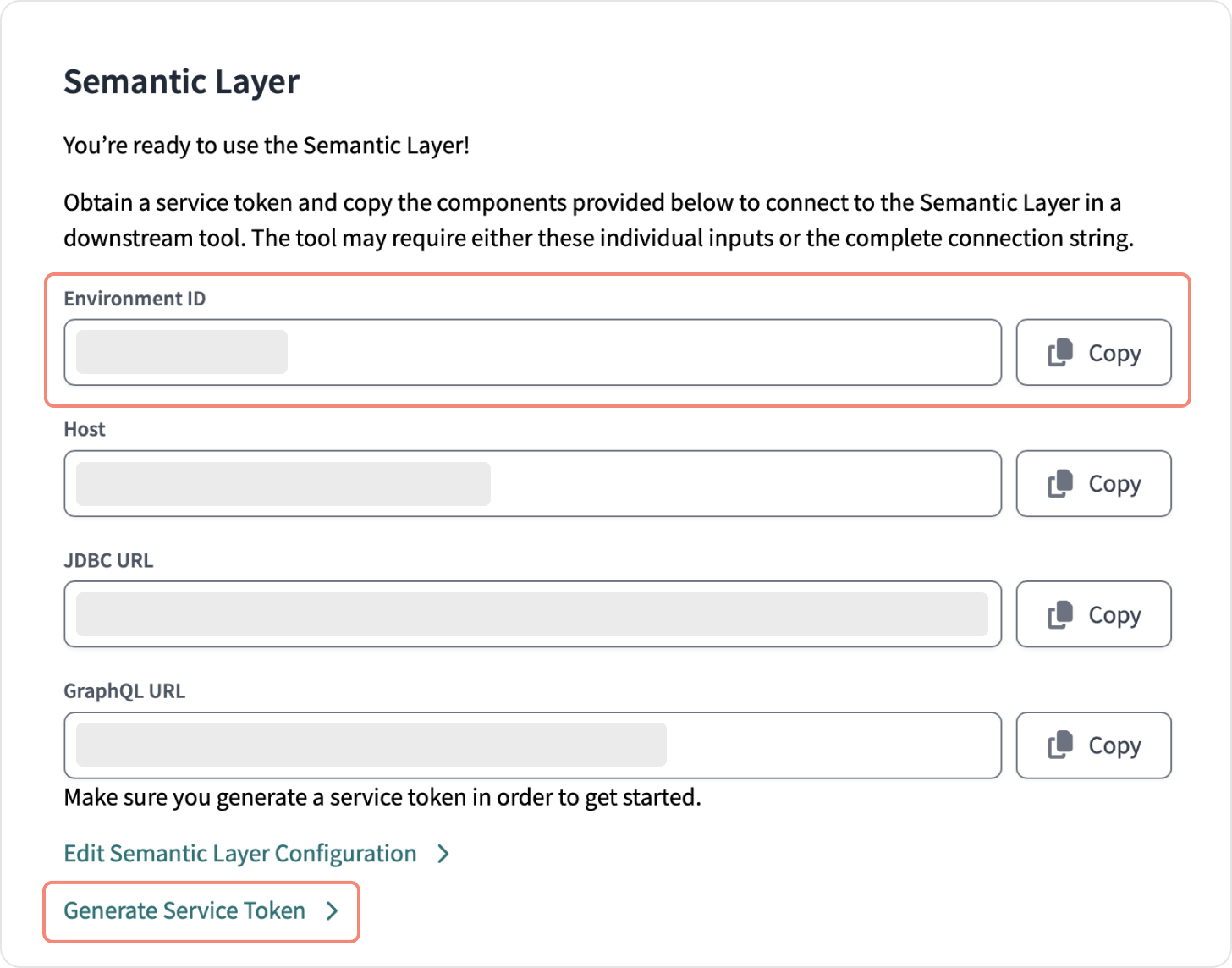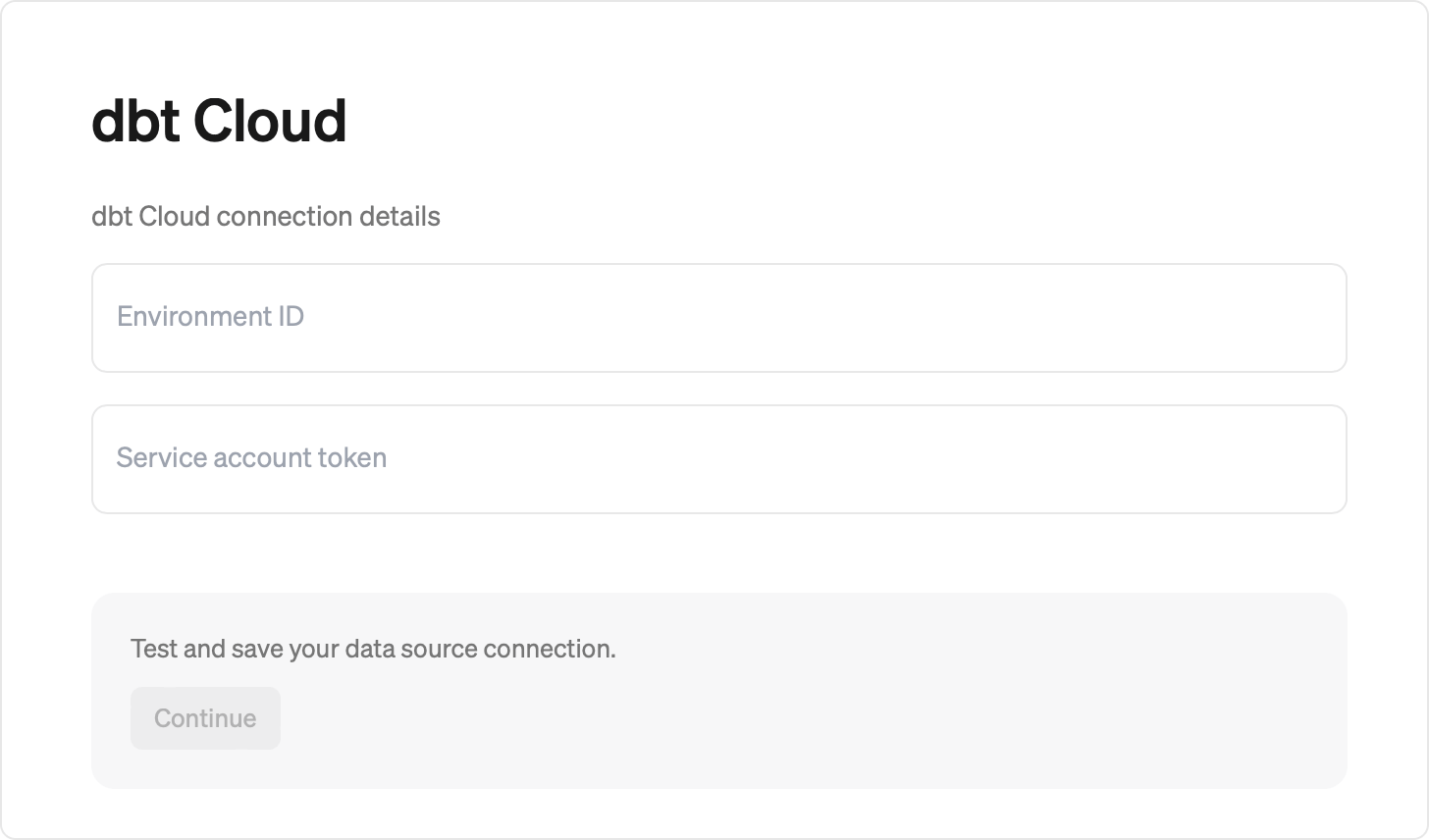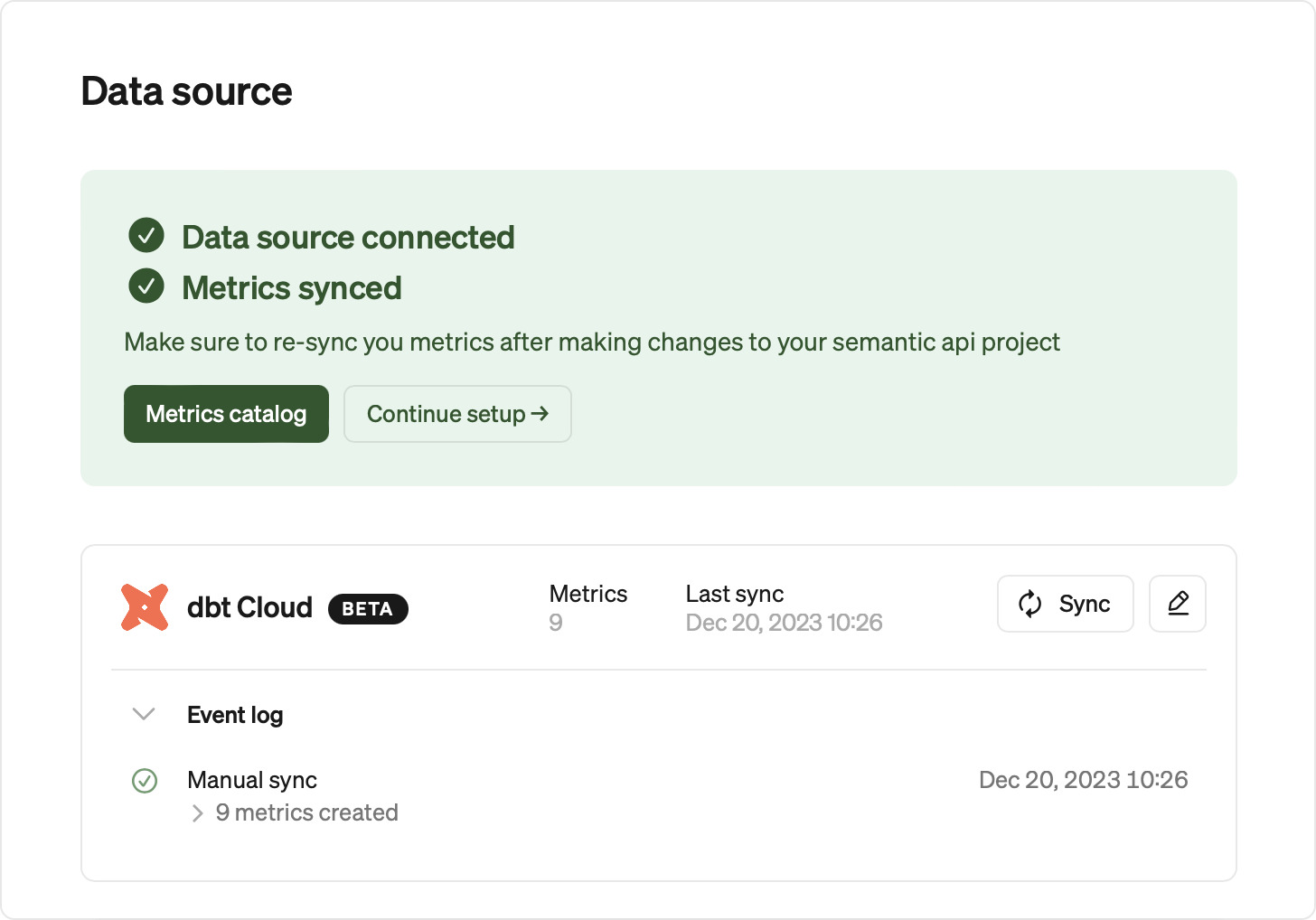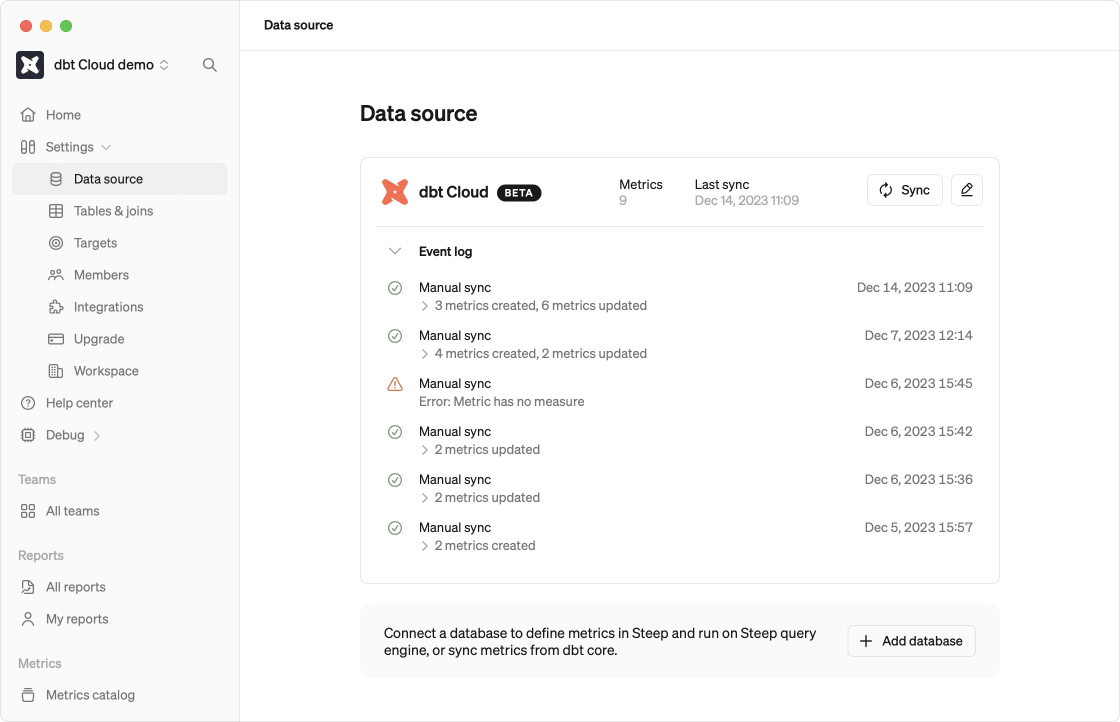How dbt Semantic Layer works with Steep
When using the dbt Semantic Layer integration, you are defining your semantic layer in your dbt project and Steep uses the dbt Cloud APIs to make your metrics available for all end users in Steep. For these metrics, Steep will not use the built-in semantic layer, and will instead use dbt Cloud for definitions, query generation and execution. Otherwise everything works just like with native metrics.
Tip
You can combine metrics from dbt Semantic Layer with metrics defined natively in Steep. This can help you to iterate on new metrics definitions in a flexible way, while managing core metrics centrally in code.
Please note
Access to dbt Semantic Layer API requires a dbt Cloud account on the Team or Enterprise plan. See dbt plans.
Setting up dbt Semantic Layer
In order to get started you need to set up your dbt Semantic Layer, by creating Semantic Models and defining Metrics.
1. Create semantic models
Create semantic models that consist of entities, dimensions and measures.
semantic_models:
- name: orders
description: Order fact table. This table is at the order grain with one row per order.
defaults:
agg_time_dimension: ordered_at
model: ref('orders')
entities:
- name: order_id
type: primary
measures:
- name: order_total
description: The total revenue for each order.
agg: sum
dimensions:
- name: ordered_at
type: time
type_params:
time_granularity: day
- name: country
type: categorical
expr: country
2. Define metrics
Example metric:
metrics:
- name: order_total
description: Sum of total order amount. Includes tax + revenue.
type: simple
label: Order Total
type_params:
measure: order_total
Learn more
Learn how to define metrics in the Build your metrics guide (dbt docs)
3. Set metadata
Besides the core metric specification, it is possible to control some additional Steep metric properties from your dbt project using the meta field. This is optional and if not defined in your dbt project you can instead use the Steep UI to configure these properties for your metrics.
Currently supported properties are category_name (string), owner_emails(string array), is_private(boolean) and unlisted (boolean). You define these in the config.meta field of metric.
# Example
metrics:
- name: registrations
...
config:
meta:
category_name: Onboarding
owner_emails: [john@example.com]
is_private: false
unlisted: false
Tip
Fields can also be prefixes with steep_ eg. steep_category_name if you prefer vendor specific metadata fields or if you are already using those field names for other purposes.
Connecting the dbt Semantic Layer to Steep
1. Set up your dbt Semantic Layer
In dbt Cloud:
- Navigate to Account Settings and select the specific project you want to enable the Semantic Layer for.
- In the Project Details page, navigate to the Semantic Layer section, and select Configure Semantic Layer.
Read the docs
Get all the steps in the Setup Semantic layer guide (dbt docs)
2. Get your Environment ID and Service token
- After saving your dbt Semantic Layer you will get an Environment ID and a Host, and can generate a Service account token (also called Service Token)

3. Add dbt Cloud as a data source in Steep
- In Steep, navigate to Settings / Data sources and add dbt Cloud
- If this is your first data source in Steep, you will see a range of options. Select dbt Cloud from the Semantic API section
- If you already have a database connection set up in Steep, select Add semantic API
- Copy the Environment ID, Host and Service account token you got from the previous step and paste it into the form in Steep:

4. Connect
- Hit Continue for your connection to be established and your dbt Semantic Layer metrics to be synced into Steep. Done 🎉

Syncing metrics to Steep
When first connecting, all dbt Semantic Layer metrics will be synced into Steep.
API sync
You can call an API endpoint at Steep to trigger a sync. This way you can automate the sync based on your needs by just integrating a call to Steep in your process of updating metrics. Go to Settings / Data sources and expand the API sync section for detailed instructions on how to set it up.
Manual sync
Anytime you update a metric in dbt Semantic Layer you can manually trigger a sync in Steep on Settings / Data sources
